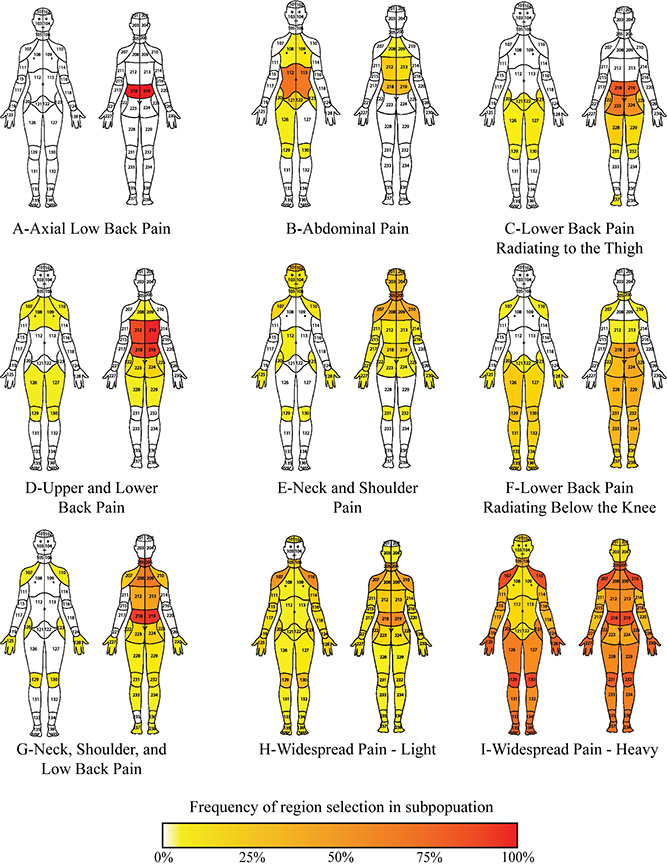Chronic Pain Body Maps
Chronic pain is a debilitating condition that affects the physical and social dimensions of life. Chronic pain is complex and varies between individuals, but the pain is often not random, and occurs over a certain region of the body. For example, fibromyalgia pain syndromes report widespread pain, but share clinically relevant features, especially regarding the impact of pain distribution on clinically important outcomes.
Researchers from the University of Pittsburgh tried to figure out of there is a commonality among reported pain patterns. They analyzed data from over 21,500 people who visited the University’s pain management clinics. Using statistical techniques, they found that how a patient reports the bodily distribution of their chronic pain affects nearly all aspects of the pain experience, including what happens three months later.
The researchers discovered that are nine groups of chronic pain based on their body pain maps:
- A-Axial LBP (Low Back Pain)
- B-Abdominal Pain
- C-LBP Thigh
- D-Upper and Lower Back Pain
- E-Neck and Shoulder
- F-LBP Below Knee
- G-Neck Shoulder and LBP
- H-Widespread—Light
- I-Widespread—Heavy
These patterns also could predict pain intensity, pain quality, pain impact, physical function, mood, sleep and indicate likely patient outcomes.
The groups are arranged from the lowest (A) to highest (I) reported pain intensity. Type A to I represented increasing anxiety, depression and sleep disturbance. The order also indicated reduced physical function (from A to I), except for E (Neck and Shoulder) that could produce most physical disabilities.
Some characteristics are given, for example, E-Neck and Shoulder, G-Neck Shoulder and LBP, and F-LBP below knee groups all had a similar part of body regions, but they were different in several aspects.
- E-Neck and Shoulder had the lowest pain intensity, highest function, and lowest pain interference among the three, and yet E-Neck and Shoulder patients reported greater anxiety than F-LBP below knee with lower depression and sleep disturbance than G-Neck Shoulder and LBP.
- F-LBP below knee group had the worst physical function of the three groups but reported less anxiety, depression, and sleep disturbance than E-Neck and Shoulder and G-Neck Shoulder and LBP.
- G-Neck Shoulder and LBP group, has the worst odds of improvement
For more information, see
https://journals.plos.org/plosone/article?id=10.1371/journal.pone.0254862
